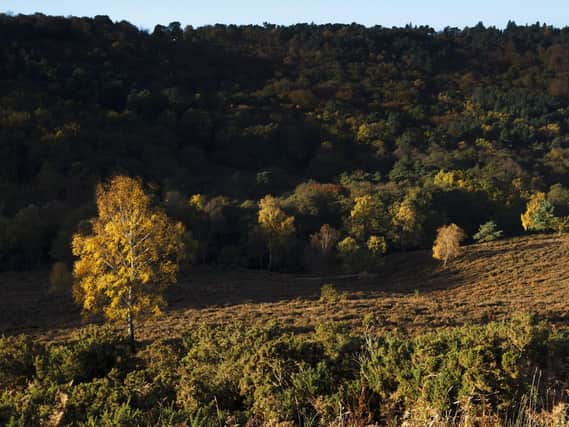Moorlands body warns against badly thought out tree planting


With plans for 11m trees to be planted nationally to lock in carbon and reduce emissions, Amanda Anderson, director of the Moorland Association which looks after thousands of acres of moorland across the UK, said it was important to plant the right tree, at the right density in the right place.
“We must plant trees for the environment and it must be well considered. People do want to plant them but it is hard to find the right places.
Advertisement
Hide AdAdvertisement
Hide Ad“For some areas like uplands where the environment is tough, we are never going to be growing really high quality timber, a long term sustainably managed woodland with native trees would be more effective than a cash crop.”
With moorland areas also home to large patches of peatland which lock in huge amounts of carbon Ms Anderson said the value of both peatland restoration and tree planting should be used collaboratively to target greenhouse gas emissions.
This was recognised in the last Budget when Chancellor Rishi Sunak, whose Richmond constituency is on the doorstep of the North York Moors, announced the details of the Nature for Climate Fund which set aside £640m for tree planting and peatland restoration.
The potential problems of badly thought out mass tree planting was highlighted last week by the Government’s Natural Capital Committee.
Advertisement
Hide AdAdvertisement
Hide AdIn its report, which looked into nature-based interventions to get to net zero, it made reference to the damage that can be done by planting trees in peatland.
It gave the example of afforestation – planting trees to create a forest – in Scottish peatlands during the late 20th century which was found, in places, to have increased the amount of greenhouse gas emissions. This was due to trees drying out peat which released more greenhouse gases than they could absorb.
The report also said increased tree planting without careful planning was likely to lead to the loss of other habitats and land uses which included peatlands, species rich grasslands and heathlands.
Ms Anderson said there were peatland areas the association was working with which had been planted with trees and were now being returned to peatland but she said bringing them back into working order was a “massive job”.
Advertisement
Hide AdAdvertisement
Hide Ad“We don’t have a measure of what good looks like when it comes to peatlands.
“No landowner has a table which says which bit is a carbon sink or which bit is emitting greenhouse gasses.
Ms Anderson said the association was currently funding deep research into greenhouse gasses released from overwet peatland.
But she said the term restored was hard to quantify as so much had affected peatlands over the centuries including air pollution from the industrial revolution, which left heavy metals in the soil, draining peatland after the war and more recently climate change which impacts on how it retains water.
“We don’t know what restored means as it is not defined.
Advertisement
Hide AdAdvertisement
Hide Ad“What we can do is bring it back to the best state possible and manage it to hold it there,” she said.
Editor’s note: first and foremost - and rarely have I written down these words with more sincerity - I hope this finds you well.
Almost certainly you are here because you value the quality and the integrity of the journalism produced by The Yorkshire Post’s journalists - almost all of which live alongside you in Yorkshire, spending the wages they earn with Yorkshire businesses - who last year took this title to the industry watchdog’s Most Trusted Newspaper in Britain accolade.
And that is why I must make an urgent request of you: as advertising revenue declines, your support becomes evermore crucial to the maintenance of the journalistic standards expected of The Yorkshire Post. If you can, safely, please buy a paper or take up a subscription. We want to continue to make you proud of Yorkshire’s National Newspaper but we are going to need your help.
Advertisement
Hide AdAdvertisement
Hide AdPostal subscription copies can be ordered by calling 0330 4030066 or by emailing [email protected]. Vouchers, to be exchanged at retail sales outlets - our newsagents need you, too - can be subscribed to by contacting subscriptions on 0330 1235950 or by visiting www.localsubsplus.co.uk where you should select The Yorkshire Post from the list of titles available.
If you want to help right now, download our tablet app from the App / Play Stores. Every contribution you make helps to provide this county with the best regional journalism in the country.
Sincerely. Thank you.
James Mitchinson
Editor